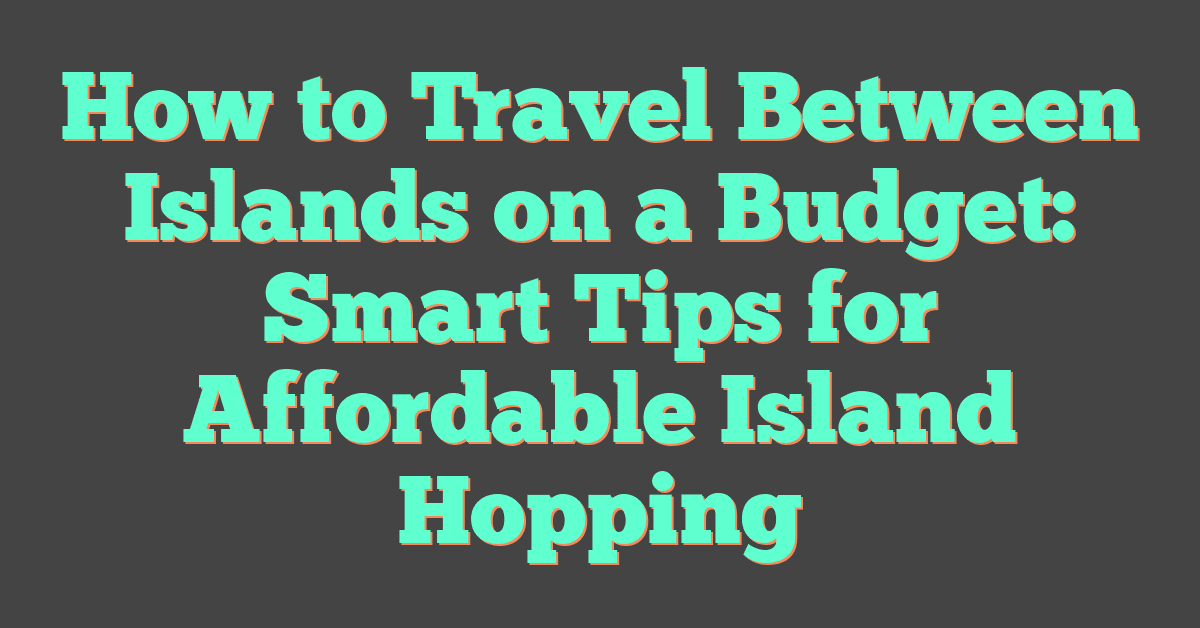Planning a trip to Hawaii? You’re probably wondering, “How long is the flight?” Well, let’s break it down for you.

The length of your flight can vary greatly depending on where you’re departing from. For example, if you’re flying out of Los Angeles, California, you’ll be in the air for approximately 6 hours before touching down in sunny Honolulu. In contrast, if New York is your starting point, brace yourself for an 11-hour journey.
Of course, these are just estimates – actual flight times can fluctify based on numerous factors such as specific airline schedules and prevailing weather conditions. It’s always best to check with your chosen airline for the most accurate information.
Factors Influencing Flight Duration to Hawaii
So, you’re planning a trip to beautiful Hawaii and wondering about the flight duration. Well, it’s not as straightforward as it seems. Several factors can influence how long your flight will take. Let’s dive into the details.
Firstly, your departure city plays a significant role in determining flight time. If you’re flying from somewhere within the US, it could be anywhere between 5 to 11 hours depending on the location of your departure city. For instance:
| Departure City | Approximate Flight Time |
|---|---|
| Los Angeles | 6 Hours |
| New York | 11 Hours |
Secondly, direct flights versus layovers also make a difference. Direct flights are faster but might not always be available or within budget.
Another factor is the speed of your aircraft which varies based on airlines and specific airplane models used for different routes.
Lastly, don’t forget about potential delays due to weather conditions or air traffic congestion which can add unexpected time onto your travel plans.
Remember that these times are just rough estimates and actual durations may vary. But by considering these variables, you’ll have a better idea of what to expect when planning your Hawaiian adventure!
Average Flight Times from the US Mainland to Hawaii
Ever wondered how long it takes to fly from the mainland U.S. to Hawaii’s tropical paradise? Your flight duration will largely depend on your departure city.
If you’re flying out of Los Angeles or San Francisco, you’re looking at an average flight time of about 5-6 hours non-stop. Travelers departing from cities in the central United States, like Dallas or Denver, can expect their flights to last approximately 7-8 hours. However, if you’re heading to Hawaii from the East Coast, say New York or Miami, be prepared for a longer haul with an average flight time of around 10-12 hours, not considering layovers.
Here’s a handy table summarizing these averages:
| Departure City | Average Flight Time |
|---|---|
| Los Angeles/San Francisco | 5-6 hours |
| Dallas/Denver | 7-8 hours |
| New York/Miami | 10-12 hours |
Mind you, these times are approximate and can vary based on factors such as specific airline schedules and prevailing wind conditions.
- Check your airlines: Some airlines offer direct flights while others may have stopovers which could add more time to your journey.
- Weather conditions: Strong headwinds can increase travel time whereas tailwinds might reduce it.
- Air traffic: During peak travel periods, congestion at airports could lead to delays.
Remember that arriving at your destination often involves more than just flight time. You’ll also need to factor in getting through security, boarding your plane and collecting baggage upon arrival – so make sure you’ve allocated enough time for these tasks too!
Impact of Wind and Weather on Hawaii-bound Flights
When charting a course to the tropical paradise of Hawaii, you might be curious about the impact weather conditions can have on your flight duration. It’s no secret that wind and weather play crucial roles in aviation, often influencing both flight paths and times.
Wind direction, especially, holds significant sway over your travel time. When you’re flying with tailwinds (winds moving in the same direction as your plane), they essentially give your plane a speed boost, shaving off precious minutes from your estimated arrival time. On the other hand, headwinds (those blowing opposite to the direction of your flight) can do just the opposite. They slow down aircrafts significantly, extending those hours spent up in the air.
Let’s take an example. A typical non-stop flight from Los Angeles to Honolulu usually takes approximately 6 hours under normal wind conditions. However:
- If there are strong tailwinds, this duration can be reduced by around 30 minutes.
- In case of potent headwinds, it could extend beyond 7 hours.
The table below summarizes these variations:
| Wind Type | Flight Duration |
|---|---|
| Normal Conditions | ~6 Hours |
| Strong Tailwinds | ~5:30 Hours |
| Potent Headwinds | >7 Hours |
Weather disturbances like storms or heavy rains can also alter flights durations but not as consistently as winds do. Airlines always prioritize passenger safety and may choose longer routes to avoid such adverse weather patterns.
Lastly, remember that seasonal changes can affect prevailing wind directions too! For instance, during winter months (November through March), stronger headwinds are more common on flights from West Coast towards Hawaii due to jet streams’ movement patterns at this time of year.
Taking into account all these factors will help you better anticipate how long your journey might take when planning that dream vacation to Hawaii!
Non-Stop versus Connecting Flights: What’s Quicker?
When planning your trip to Hawaii, you’re likely considering both non-stop and connecting flights. Let’s dive into the time difference between these two options.
Non-stop flights, as the name suggests, take you directly from your departure city to your destination without any stops. If you’re flying from the West Coast of the United States (for instance, Los Angeles or San Francisco), a non-stop flight to Hawaii typically lasts between 5-6 hours.
| Departure City | Flight Duration |
|---|---|
| Los Angeles | 5-6 hours |
| San Francisco | 5-6 hours |
On the other hand, connecting flights involve one or more stops along the way. While these might be more budget-friendly, they also add considerable travel time. From the West Coast, such a journey could extend your travel time by at least 2-4 hours depending on layovers.
Let’s consider some factors that might influence your choice:
- If time is of essence for you – opt for a non-stop flight.
- However, if you’re looking to save money and don’t mind spending extra hours in transit, connecting flights are worth considering.
Remember that flight times can vary based on specific airlines and routes chosen. It’s always wise to check with your airline about estimated travel duration before finalizing bookings.
So now when planning for that dream Hawaiian vacation, you know what aspects need consideration while selecting between non-stop and connecting flights!
How Departure Cities Affect Your Travel Time to Hawaii
Ever wonder how your starting point impacts the length of your flight to Hawaii? Let’s dive into the specifics.
The continental U.S. has numerous major airports that offer flights to Hawaii. However, your departure city greatly influences how long you’ll be mid-air. For instance, if you’re flying out of a west coast city like Los Angeles or San Francisco, expect a shorter flight compared to leaving from an east coast city like New York or Miami.
Here’s a quick glance at average travel times from various U.S cities:
| Departure City | Average Flight Duration |
|---|---|
| Los Angeles | 5-6 hours |
| San Francisco | 5-6 hours |
| Chicago | 8-9 hours |
| New York | 10-12 hours |
These figures are simply averages and actual times can vary depending on factors such as weather conditions and specific airlines’ schedules.
But don’t forget: it’s not just about where you start—it’s also about where in Hawaii you land. The state boasts several airports spread across its islands. This means your destination within Hawaii can also tweak your total travel time.
For example, if you’re flying directly to Honolulu on Oahu island, your flight may be shorter than if you’re heading to Kahului on Maui island—especially if a layover is involved!
To summarize:
- West coast departures typically result in quicker flights.
- East coast departures often mean longer air-time.
- Your final destination within Hawaii can add extra minutes (or even hours) onto your journey.
While it’s impossible to control all these factors, being aware of them will help manage expectations when planning your Hawaiian adventure. Remember: every minute spent traveling gets you closer to paradise!
The Role of Airplane Speed in Determining Flight Length
Ever wondered how airplane speed impacts your flight duration to Hawaii? Let’s delve into this intriguing aspect.
When planning your trip, it’s crucial to understand that the total time you’ll spend getting to Hawaii isn’t just about distance alone. It significantly depends on the speed at which your airplane flies as well. Commercial airlines usually cruise at speeds around 500-600 miles per hour (mph). But remember, numerous factors can alter an aircraft’s speed including wind direction and strength, weather conditions, air traffic and even the weight of the plane itself.
Typically, a direct flight from Los Angeles to Honolulu takes approximately 5 hours and 30 minutes. However, if there’s a favorable tailwind, it might shave off some precious travel time for you! Yet conversely, a strong headwind could add extra minutes or possibly an hour to your journey.
For easier understanding of how speed affects flight length let’s consider these hypothetical scenarios:
| Scenario | Aircraft Speed (mph) | Estimated Flight Time |
|---|---|---|
| Normal | 550 | 5h 30m |
| Fast Tailwind | 600 | ~5h |
| Strong Headwind | 500 | ~6h |
Keep in mind these are rough estimates only; actual times may vary.
You’ve probably noticed while booking flights that not all offer the same duration for the same route. That’s because different airlines use different aircraft models which have varying cruising speeds. For instance:
- The Boeing 747 cruises around 570 mph
- The newer Airbus A350 has a typical cruising speed of about 560 mph
While it doesn’t seem like much difference on paper, over long distances such as flying from mainland USA to Hawaii; those few extra miles per hour can really add up!
Therefore when choosing flights for your Hawaiian getaway always bear in mind that faster isn’t necessarily better. Sometimes slower flights offer more amenities or better service – but if getting there quickly is your top priority then be sure to check out the estimated travel times before hitting ‘book’.
Time Zone Differences Between Hawaii and the Continental US
When you’re planning your journey to the paradise that is Hawaii, it’s important to consider the time zone differences. Hawaii operates on Hawaii Standard Time (HST), which doesn’t observe daylight saving time. This means that while many mainland states are adjusting their clocks, Hawaii remains steady.
Here’s how HST lines up with some major U.S. time zones:
| U.S. Time Zone | Time Difference with HST |
|---|---|
| Eastern Standard Time (EST) | 5 hours ahead |
| Central Standard Time (CST) | 4 hours ahead |
| Mountain Standard Time (MST) | 3 hours ahead |
| Pacific Standard Time (PST) | 2 hours ahead |
During daylight saving months, from March through November, these differences increase by an hour for those states observing the change.
Do note that your flight duration isn’t just about airtime; it also involves potential layovers and these crucial time zone changes. Changing multiple zones can lead to jet lag so it’s wise to adjust your schedule a few days in advance of your trip.
Remember though – making your way to this tropical haven might take longer than a typical domestic flight but as soon as you set foot on its golden sands and breathe in the sweetly-scented air, you’ll find it was well worth every minute!
Ways to Make Your Flight to Hawaii Feel Shorter
Let’s face it, long flights can be daunting. Particularly when you’re jet-setting to a paradise like Hawaii. With the average flight duration from the US mainland ranging between 5-11 hours depending on your departure city, you might be wondering how you’re going to pass all that time. Well, don’t worry! We’ve got some tips for you.
Planning is key, and it starts before your flight takes off. Pack your carry-on with essentials such as noise-canceling headphones, a neck pillow, and an eye mask. Digital entertainment options could include downloading your favorite shows or bringing along a fully charged Kindle loaded up with books.
| Essential | Purpose |
|---|---|
| Noise-cancelling headphones | To block out plane noise |
| Neck Pillow | For comfortable sleep |
| Eye Mask | To block out light |
Should snacking be your thing, consider packing some of your own treats. Airline food isn’t always satisfying and having familiar snacks can make the journey more pleasurable.
Next up would be staying active during the flight itself. You’d want to avoid deep vein thrombosis (DVT), which is a risk on longer flights. Here are some ways:
- Get up and move around every couple of hours
- Do simple stretches at your seat
- Stay hydrated
Don’t overlook the power of sleep either! If possible, adjust your sleeping schedule before leaving so that it aligns more closely with Hawaiian time.
Lastly, if you’re not one for naps or movies – try learning something new! How about picking up a few Hawaiian phrases or studying its rich history? It’s sure to get you even more excited about reaching those beautiful islands!
Remember: while flying may seem like wasted time now – it doesn’t have to be if planned right!
Best Times to Fly to Minimize Travel Time to Hawaii
You’re probably wondering, “When’s the best time to fly if I want to minimize my travel time?” Well, you’re in luck. The answer largely depends on your departure city and airline of choice.
The average flight duration from the West Coast is roughly 5-6 hours, while flights from the East Coast can take anywhere between 8-11 hours. These durations can fluctuate based on wind speed and direction, so it’s always a good idea to check with your airline before booking.
| Departure City | Average Flight Duration |
|---|---|
| Los Angeles | 5-6 hours |
| New York | 8-11 hours |
Now, let’s talk about timing. Early morning flights tend to have less air traffic and, therefore, fewer delays. You’ll find that departing earlier could save you precious vacation time.
Here are some tips for minimizing your travel time:
- Book direct flights: Stopovers add unnecessary hours to your journey.
- Choose an early flight: Less congestion means fewer delays.
- Check wind conditions: Tailwinds can shorten flight times.
- Consider off-season travel: Fewer passengers often mean faster boarding and deplaning.
Remember! While these strategies might help reduce travel time, they won’t eliminate it completely. So sit back, relax, enjoy the in-flight service – Hawaii will be waiting when you land!
Conclusion: Planning Your Journey to Paradise
So you’ve made it to the end of our guide on “how long are flights to Hawaii?” and you’re probably itching to get your bags packed already. Well, hold onto that excitement as we wrap things up!
Direct flights from the West Coast usually take around 5-6 hours. From central parts of the U.S., you’ll be looking at 7-9 hours in flight. And if you’re flying in from the East Coast, be prepared for a journey lasting 10-12 hours.
Here’s a quick recap:
| Location | Approximate Flight Duration |
|---|---|
| West Coast | 5-6 Hours |
| Central U.S. | 7-9 Hours |
| East Coast | 10-12 Hours |
Remember, these times are rough estimates and actual durations may vary based on factors like weather conditions or air traffic.
Before booking your ticket to paradise, consider these pointers:
- Choosing direct flights will cut down your travel time.
- Off-season periods may offer cheaper fares.
- Always check for updates on travel advisories or restrictions.
Lastly, remember this piece of advice – don’t let the length of the journey deter you. The moment you set foot in Hawaii and breathe in its fresh tropical air, all those hours spent flying will seem worth it! After all, they say good things come to those who wait…and trust us; Hawaii is more than just ‘good’. It’s an experience that’ll leave a permanent stamp not just on your passport but also on your heart!
Bon Voyage!




